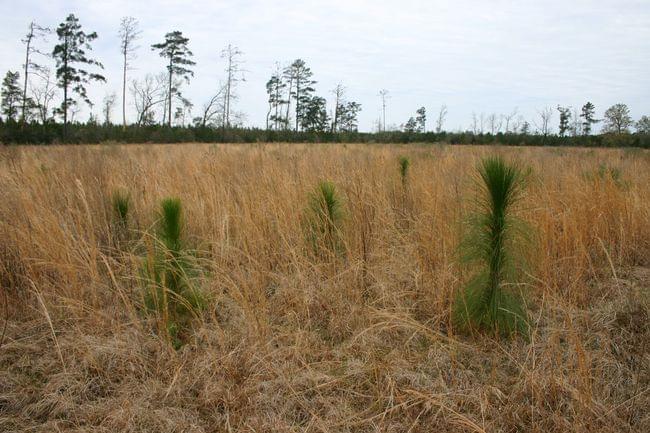
Before the United States was settled by Europeans, longleaf pine forests covered about 90 million acres of the Southeast.
Post-settlement, most of these forests were logged for turpentine and lumber, and by 1975 they had been reduced to about 5 million acres.
Now, the U.S. Fish and Wildlife Service is working with private landowners, state and federal agencies and conservation groups to restore the glory of the longleaf.
The motivation for many of these conservationists is to help the many at-risk and endangered birds and wildlife that thrive in longleaf forests, from the red-cockaded woodpecker to the gopher tortoise.
The Sovereign Nation of the Coushatta Tribe of Louisiana has an additional motive: basket-weaving, a significant part of its heritage.

Coushatta elders weave beautiful, intricate baskets from longleaf pine needles that are collected worldwide and are included in Native art collections in the Smithsonian and other museums.
So a partnership between the Coushatta Tribe and the Fish and Wildlife Service to plant more longleaf pine seedlings is as natural as a walk in the woods.
“It’s an important part of our culture,” said Gardner Rose, natural resources manager for the tribe. “My grandmother was born around 1918. She started when she was 5 years old. Some of the men weave river cane baskets, but she said the river cane would cut your fingers, so she chose the longleaf pine needles. They would trade them for food.”
Rose said that today about 25 to 30 elders, out of a tribe of about 800-plus, weave longleaf pine needle baskets. A basket takes about a week to make, and can sell for $300 or more.
The Coushatta were originally from Tennessee, but migrated to central Louisiana in the 18th century and settled about two hours west of Baton Rouge. On about 5,000 acres of tribal land, they have tribal offices, a casino, and now, a lot more longleaf pine.
The Coushatta and the USFWS started as partners in 2009, and have restored habitat on three separate tracts of land totaling more than 350 acres; work will be completed in 2018.
On the first tract, the Fish and Wildlife Service paid for 28 acres of longleaf pine seedlings, five acres of bottomland hardwood seedlings and herbicide to control invasive species. The agency and the Coushatta pooled personnel and equipment to do the work.
“Some of those longleaf trees we planted that year are 20 feet tall now,” said Andrew Dolan, the USFWS state private lands coordinator in the Lafayette, Louisiana field office who has worked most closely with the tribe.
The partnership continued with a second tract, then a third, with work ongoing. This collaboration has also included the creation of sloughs, or wetlands, which attract many species of waterbirds.
Some tribe members hunt deer and ducks on the land, but the land is not open to non-tribal members of the public.
Birds and wildlife that have benefitted from the work include grassland and forest songbirds, raptors, wading birds, shorebirds, and pollinator insects. Red-cockaded woodpeckers, listed as endangered under the Endangered Species Act, have not yet moved in, but Dolan said they are as close as 10 miles away and may take refuge in the pines in the future.
The Louisiana Department of Wildlife and Fisheries and the Louisiana Department of Agriculture and Forestry also have assisted in the habitat restoration.
In 2013, the USFWS’s Partners for Fish and Wildlife Program gave the program a Landowner Stewardship Award.
“The longleaf tracts will represent the only longleaf stands for dozens of miles in any direction in an area that was historically mostly longleaf,” the 2013 award read. “We have hopes that these longleaf restoration efforts will inspire other neighboring landowners to follow the Coushatta Tribe’s good example, and consider longleaf restoration in the future.”
Phil Kloer is a public affairs specialist for the U.S. Fish and Wildlife Service.
[…] PHIL KLOER – TREESOURCE · Image by USDA / FLICKR.COM / […]